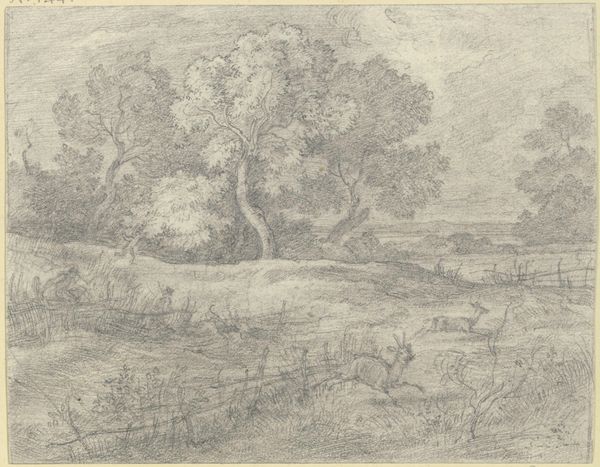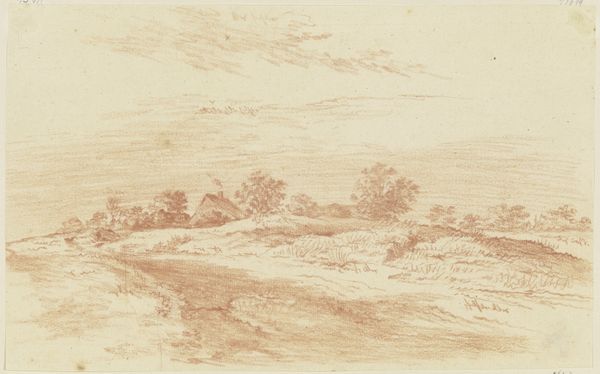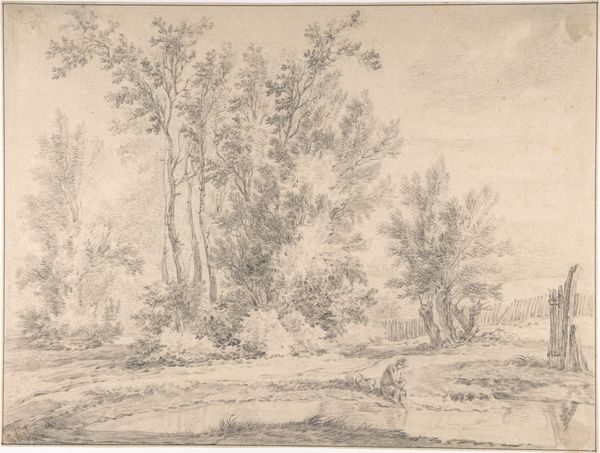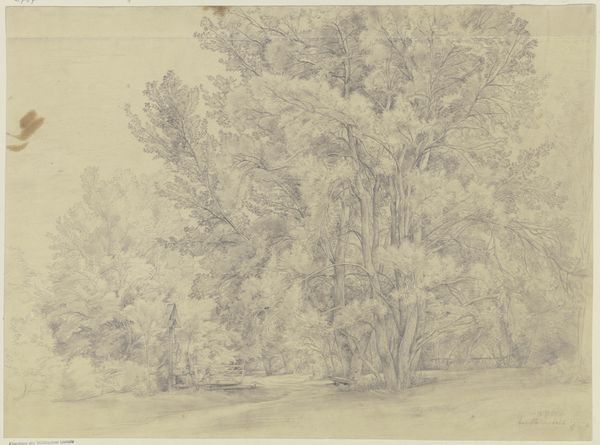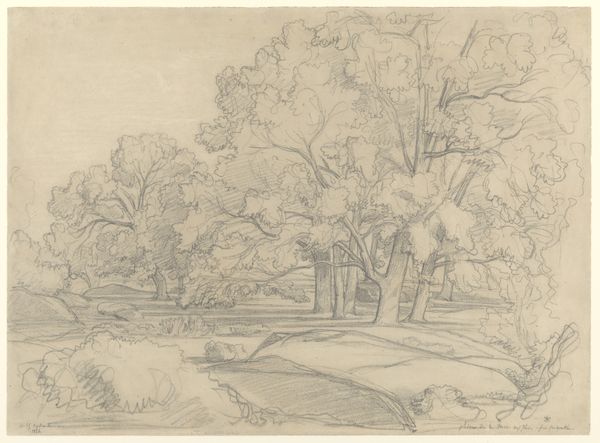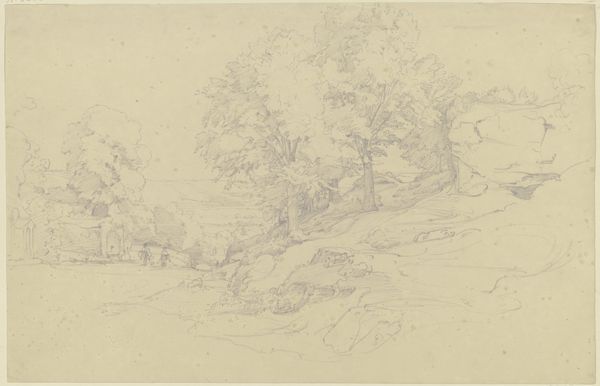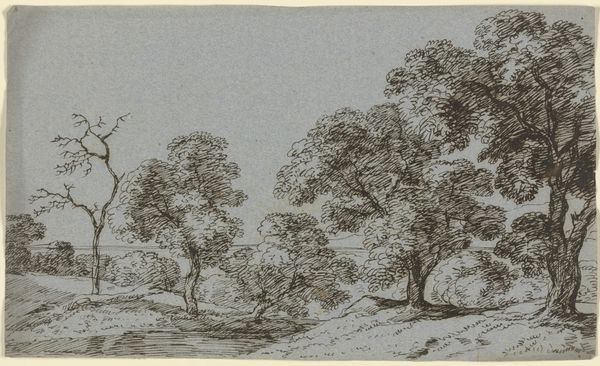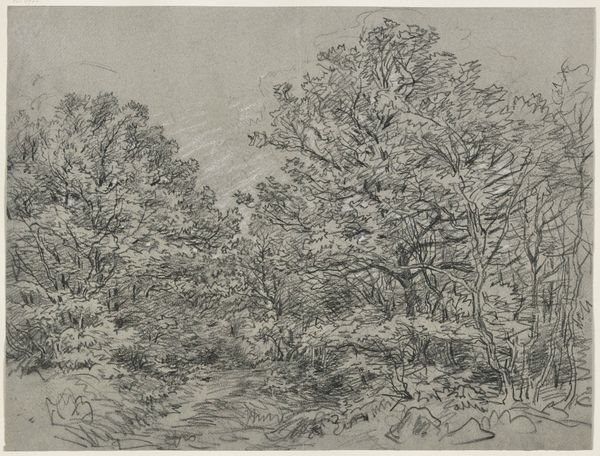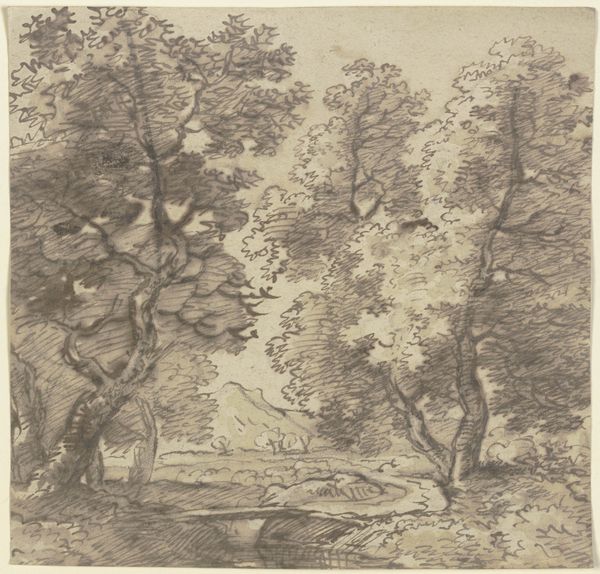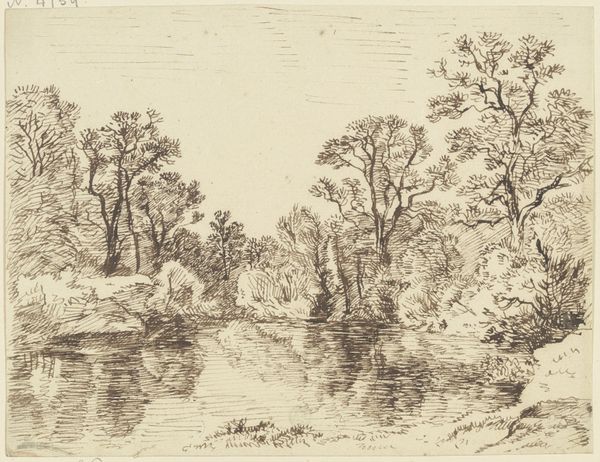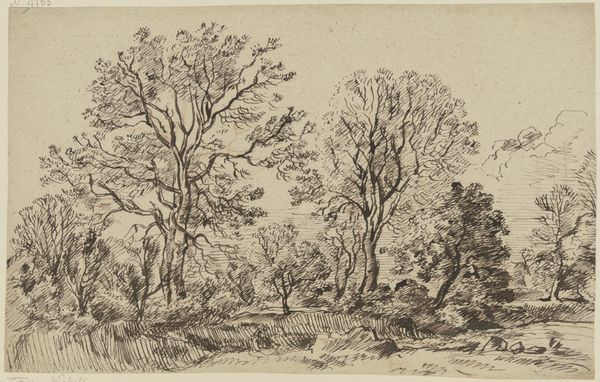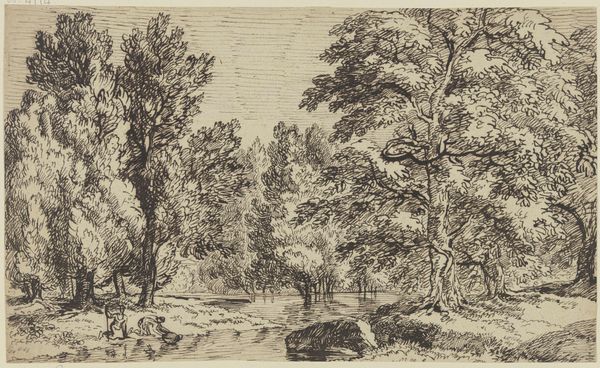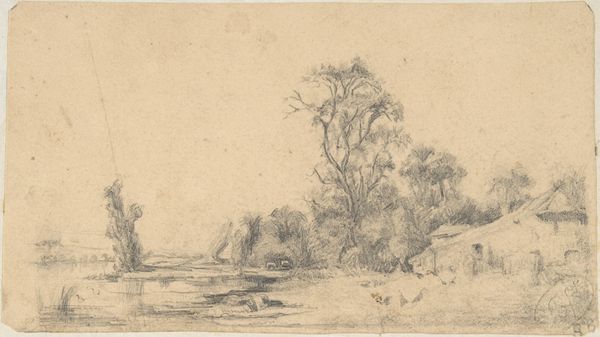
drawing, dry-media, pencil, graphite, frottage
#
drawing
#
landscape
#
dry-media
#
romanticism
#
pencil
#
graphite
#
northern-renaissance
#
frottage
Copyright: Public Domain
Ferdinand Olivier made this pencil drawing, 'Baumgruppen am Wasser, im Hintergrund eine Kirche,' around 1820, but the exact date remains unknown. In this subtle rendering of nature, we see trees reflected in water with a church in the distance. Olivier was German, and his work fits within the Romantic movement, which was influential in early 19th century Europe. The Romantics reacted against the Enlightenment by emphasizing emotion and the power of nature. We can see this in the artist's sensitive and detailed depiction of the natural world. However, there's more than meets the eye. Germany at this time was not yet a unified nation. Rather, it was made up of small states with strong local identities. Art and architecture were a means by which people defined themselves and their sense of belonging. The church in the background, a symbol of community, suggests the cultural importance of religion in early 19th century Germany. As art historians, we can research this further, by studying, for example, local parish records. The meaning of art is always contingent on social and institutional context.
Comments
No comments
Be the first to comment and join the conversation on the ultimate creative platform.
